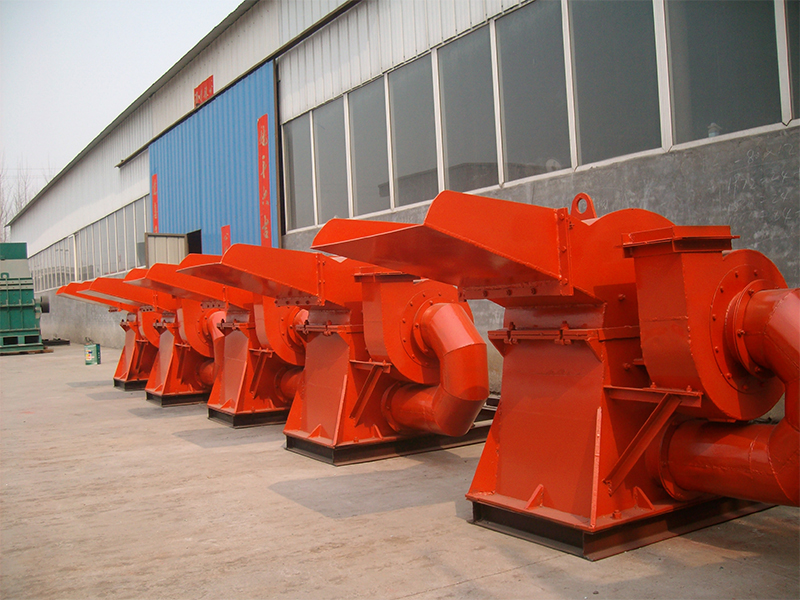Mail: htcrusher@hamachine.com
Telephone: 008618838076345
Links: YOUTUBE TWITTER FACEBOOK

Mineral processing is a critical industry in Belarus, given its rich deposits of various minerals. Efficient mineral processing not only enhances the quality of the end product but also ensures environmental sustainability and cost-effectiveness. One innovative approach to improving mineral processing, particularly for river pebbles, involves the use of dry and wet wood crushers. This article explores how integrating these technologies can revolutionize the mineral processing sector in Belarus.
The Importance of River Pebbles in Mineral Processing
River pebbles are sedimentary rocks that have been smoothed and rounded by the action of water over time. They are commonly found in riverbeds and are composed primarily of quartz, feldspar, and other silicate minerals. These pebbles are valuable for several reasons:
1. Construction Aggregate: River pebbles are used as high-quality aggregate in construction projects due to their durability and aesthetic appeal.
2. Concrete Production: They serve as a crucial component in concrete mixtures, enhancing strength and stability.
3. Landscaping: Their smooth texture and natural appearance make them ideal for landscaping purposes.
Given their importance, optimizing the processing of river pebbles is essential for maximizing their utility and value.
Challenges in River Pebble Processing
Processing river pebbles presents several challenges:
1. Size Reduction: Achieving consistent size reduction without damaging the integrity of the pebbles is difficult.
2. Contamination: Removing contaminants such as clays and organic materials while preserving the quality of the pebbles is challenging.
3. Environmental Impact: Traditional processing methods often consume significant amounts of water and energy, leading to environmental concerns.
Innovative Solutions: Dry and Wet Wood Crushers
To address these challenges, the integration of dry and wet wood crushers into the mineral processing workflow offers a promising solution. Here’s how each technology contributes to enhancing the processing of river pebbles:
Dry Wood Crushers
Dry wood crushers are designed to process wood and other organic materials without the need for water. They operate using mechanical force to break down materials into smaller pieces. In the context of river pebble processing, dry wood crushers offer several advantages:

1. Energy Efficiency: Dry wood crushers require less energy compared to traditional crushing methods, reducing operational costs.
2. Minimal Dust Emission: Modern dry wood crushers are equipped with dust suppression systems, minimizing airborne dust and improving workplace safety.
3. Versatility: These crushers can handle a variety of materials, including wood chips, bark, and other organic waste, making them versatile tools in mineral processing plants.
Wet Wood Crushers
Wet wood crushers, on the other hand, utilize water to aid in the crushing process. This method is particularly useful for processing river pebbles mixed with organic materials or clays. Key benefits include:
1. Effective Contamination Removal: The use of water helps wash away clays and organic impurities, resulting in cleaner and higher-quality pebbles.
2. Reduced Wear and Tear: Water acts as a lubricant, reducing friction between the crusher's components and the material being processed, thereby extending equipment lifespan.
3. Enhanced Separation: Wet processing allows for better separation of different particle sizes, ensuring a uniform final product.
Implementation in Belarus
Integrating dry and wet wood crushers into the mineral processing workflow in Belarus requires careful planning and consideration of local conditions. Here are some steps to successfully implement these technologies:
1. Feasibility Study: Conduct a comprehensive feasibility study to assess the suitability of dry and wet wood crushers for specific mineral processing operations.
2. Equipment Selection: Choose appropriate crusher models based on the scale of operation, material characteristics, and desired output quality.
3. Training and Development: Provide training for operators and maintenance staff to ensure safe and efficient use of the equipment.
4. Monitoring and Optimization: Implement monitoring systems to track performance metrics and optimize processing parameters for maximum efficiency.
Conclusion
The integration of dry and wet wood crushers into mineral processing operations in Belarus offers a sustainable and cost-effective solution for enhancing the quality of river pebbles. By addressing key challenges such as size reduction, contamination removal, and environmental impact, these technologies can significantly improve the overall efficiency and profitability of mineral processing plants. As Belarus continues to develop its mineral resources, adopting innovative approaches like dry and wet wood crushing will be crucial for maintaining competitiveness and ensuring environmental stewardship.
Copyright © hengtong machinery Privacy Policy